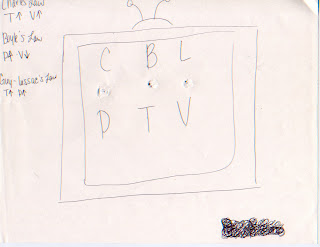Materials:
-Mac
-Vernier Computer Interface
-LoggerPro
-Vernier pH senso
-HCL Solution, unknown Concentration
-0.100 M NaOH Solution
-Magnetic Stirrer
-Stirring Bar
-Wash Bottle
-50-mL buret
-Ring Stand
-2 Utility Clamps
-10-mL pipet
-Pipet Pump
-250-mL beaker
-Distilled water
The picture below is the whole reason why we did this experiment. As we slowly added NaOH (a base) to hydrochloric acid (a acid) We watched to see the exact point when the acid changed to a base. As you can see from this graph and the list of levels to the left, it was after we added about 16 mL of NaOH. It was really interesting to watch the sudden change in pH levels that occurred after we added just the right amount of base.
In this lab the equivalence point was 16 mL because that was the point that the pH level started to rise to a point that would classify the solution as a base instead of an acid.
Mr. Ludwig introduced me to this little equation to help me discover the concentration of the acid.
It is:
M1V1=M2V2
Basically what that means is that the concentration of the base (NaOH) multiplied by the Volume of NaOH that we slowly added is equal to the concentration of the acid (HCL) multiplied by the Volume of the Acid we used.
After doing the math I came up with 1.6x10^-5 for the concentration of the acid.






